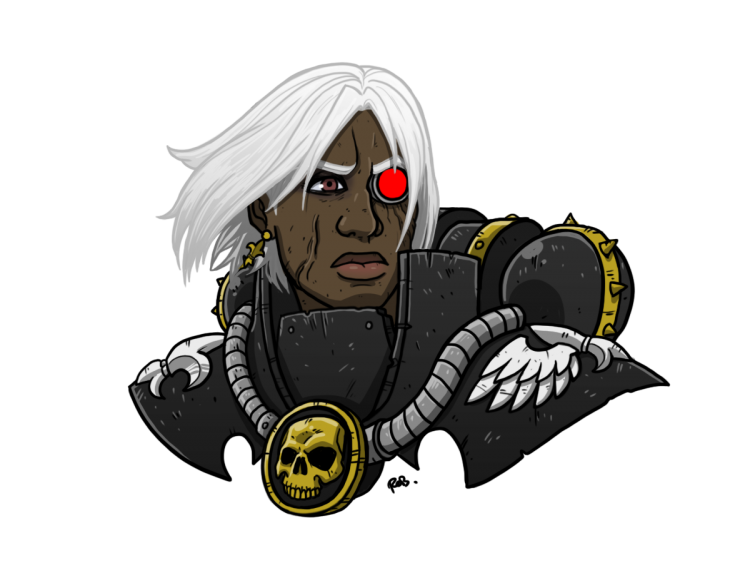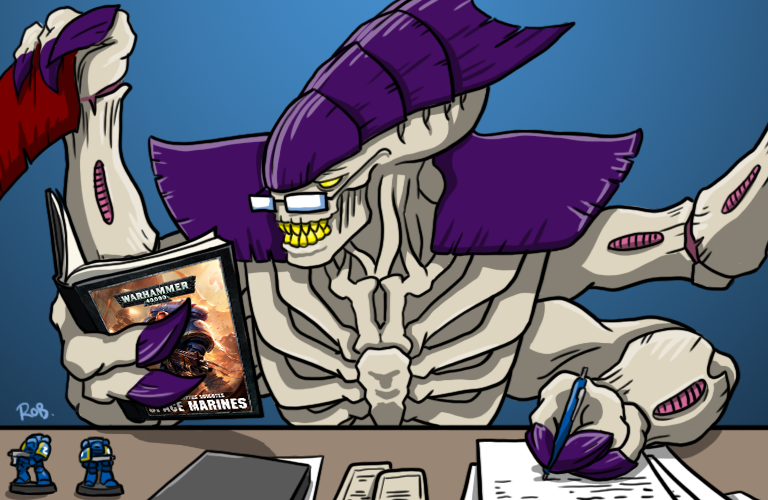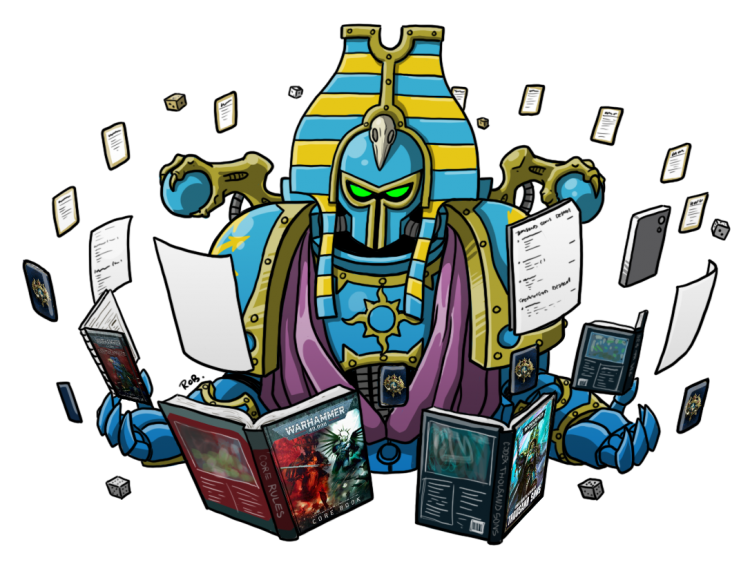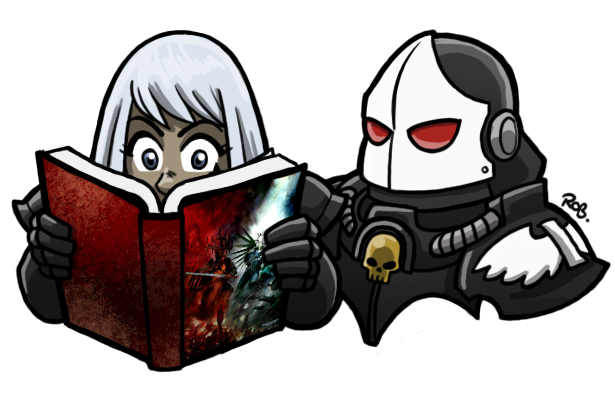Over the last four years we’ve put together many articles that give players the tools to improve on their own when it comes to Warhammer 40k – our Start Competing series is easily the largest and longest-running of these. We’ve talked about sportsmanship and the value of practice. Some of the more common questions we’ve received over that time have been around taking the raw information in our series and putting it into practice – i.e. “now that I know which units are good, how do I use them on the table? How do I turn data into action?” In this series we’re going to focus on taking the information compiled across various sources and institutional knowledge from other players and putting it into practice with the primary goal of helping a new player achieve their goals on the table. There are many coaching services out there; this is not one of them. I have always been interested in training people, both in my professional and hobby lives and as I’ve recently started mentoring a new player I thought this would be a good opportunity to write about the experience and take that love of helping others and extend it to a broader audience.
So join me on this free journey. I’m excited for you to come with me as we improve together, on and off the table.
The Mission
As a coach my goal is always to see improvement measured statistically (often in win rates), but as a competitive 40k player this can sometimes be difficult to see and measure, and can lead to missing the trees for the forest. Mostly I want to find ways to identify and illustrate improvement and instill the same mentality I used to take in the weight room: I am not there yet, keep grinding and I will be. As I do this I’m not so much trying to instill my own play style in my student as I am helping them to find their own style of play, and helping them commit to it and plan around it, so they’re able to deploy and play with purpose. The end goal is to have our player able to compete at any table they show up to and feel confident in their knowledge of the game and capabilities. This is easier said than done however and the path that leads us there will test both of us but I am confident that through this process both of us (and hopefully, you the reader) will improve.
Throughout this series my plan is to cover the following topics, many of which will be discussed in a more one-on-one fashion with my student and then translated into an article along with additional thoughts and notes. Right now I am planning to cover:
-
- Finding your play style
- Meta Discussion: How to create a list based on the local meta
- Doing your homework for an event
- Building a game plan
- Deployment and first-turn movement
- Mid-game play
- End-game play
- Post game analysis and between round preparation
- Moving through a tournament

The player
For this series our player in question will be Rob Helton of the Sister Act podcast; Rob is someone who seems to be in every Patreon and discord group out there (including being an active patron of Goonhammer), and recently he and I struck up a conversation after playing in a tournament against each other. After some discussion it turns out Rob really wanted help with specific aspects of the hobby and asked if I could help him out a long the way. I had been looking for more opportunities to write after finishing our 9th edition update of Start Competing: Space Wolves and this was the perfect opportunity to set off another article series. We started with our first game together.
From my game with Rob and my discussions with him I felt he was a player who was very close to being good at the game, but needed some help to get on the right path. Rob had game notes, post-game notes, and asked all the right questions during our game and that immediately gave me the impression that he was a person with a strong desire to improve and significant potential. I respect that desire – for me, that desire to better yourself is more important than any final placing in the ITC season or how you finish at a particular event. As you might have guessed by that podcast name and the images we’ve posted in this article, Rob is a die-hard Sisters of Battle player.
Meet Rob Helton
Hello, I am Rob. I officially started this hobby in 2018 when I was getting my enjoyment from playing Space Hulk. After GenCon I picked up my first box which lead me into Kill Team. I had zero intention of ever playing 40k but I was having fun helping my local gaming stores run Kill Team events; it was not until I came across a Custodes lore-based podcast that I finally got the bug to dive into the vast world of Warhammer 40 000. I would define myself as a “casually competitive” player with a focus on the social contract side of the game; I am not a world champion, I want to enjoy my time at the table and I want my opponent to enjoy themselves as well. I like winning as much as the next person but I will not sacrifice the player experience to try and eke out a win. I am still a novice when it comes to the dynamics and strategy of competitive play. While new to 40k, I have accomplished a lot! I am very proud to be the co-host of Sister Act 40K, a podcast solely focused on the Adepta Sororitas. Since starting the podcast I have had the opportunity to appear on several popular 40k podcasts and have interviewed Black Library authors, wonderful community members, and competitive players alike. Finally, I have a very rich family life and time-consuming career. 40k is my hobby, passion, and a way to “get away.” It’s very important to me that my hobby time be high quality and that I am growing holistically across sportsmanship, competitive play, and painting.
Goals:
-
- Set a time table of RTT events culminating with a GT or Major. I need the timeline to force me to focus on my list, hobby painting to get ready, and stay on track with my goals.
- Create a ‘base list’ for repetitions in competitive play. I expect the list will evolve over time, however having a base list will force me to practice my rule interactions, understand my local meta, and discover my own personal play style. I really need to embrace some stability here so I can gain confidence in myself, and to help me have “The Plan” for when I play.
- Create “The Plan” for the list, which is inclusive of reserves, transports, secondaries, and deployment priorities.
- Create archetypal variations of the plan to account for different dynamics and meta types. This is to help me from completely throwing out the plan in new situations, or to overly commit the same plan when I need to bring different secondaries etc.
- Play most / all of my competitive games on a clock. This is to promote improvement of my time management skills, rules knowledge, and movement phases. I would like to complete my deployment and first turn in less than 20 mins as a goal.
- Keep a journal of every game: Clock time, deployment pictures, and secondaries with a postgame write-up. My goal here is to give myself space and time to think through what went well, what can be improved, and any opportunities for growth. This will be a primary collateral between myself and my mentor.
The Initial session
The first step on this journey together begins with a two-hour scheduled Discord call with Rob while he is driving his son across Kentucky. This is where we begin to build our relationship and build trust together. This is an important step in any form of coaching – the first impression and setting of expectations. We both need to be on the same page and committed to the same goals. As he drives we discuss our lives and talk about our jobs. The words “fuck COVID” are said many times over the duration of the call. This can be tough for me: I don’t do well with small talk and tend to be very forward and task-focused when talking, which can make me come across as intimidating. Fortunately, Rob is one of the nicest people you’d ever be lucky enough to meet at a table and we hit it off very well. Through our discussion we put together our plan for the next few weeks and put a schedule in place that would allow us to set everything in motion. We need to find the baseline and I need to learn where we are at with our knowledge and experience base.
From this discussion Rob explained to me that he has tried coaching services in the past as well as various Sisters-specific Discord servers and Patreons and so far nothing has worked well for him. So this is a very special piece of work I have in front of me – I love challenges and I love helping people; I have every bit of confidence that we will be able to translate my and the stored knowledge on Goonhammer into a cohesive, working training plan for Rob. Our first talk focused on some of the key basics and where Rob’s game comes off the rails. Based on our talk, we identified these key points:
-
- List design issues and struggles to find his own style and stick with it
- No plan for secondary choices
- Has a game plan but isn’t adapting to changes in game state
- Has issues with sequencing

List design
After the “actual cost of buying the models” one of the biggest barriers to entry for competitive play is “being able to assemble a sound list.” There are a few ways to do this and I’m sure that by now most people are familiar with the term “net list,” or the idea of going on the internet to find a list that is performing well at events and then copying that list. While normally this is a term people say with derision, it’s probably the quickest and most reliable way to put together a decent list for an upcoming event. It’s also a good way to find out if the list you were using before was the reason you were struggling or your problems were caused by your own misplays. Unless you’re pulling some incredibly skewed or off-meta list, you’re pulling a list that’s had proven success, so you’ll immediately know if the problems are caused by player knowledge and skill. I typically always recommend that new players try out a couple of net lists to see what’s been done and to see what they like and do not like in those lists. However, Rob is not a new player so he’s beyond this stage. He’s also not here with me so I can just give him a more “cookie cutter” list.
One of Rob’s main concerns is that he recognizes that he often plays whatever he is painting as he is a prolific hobby enthusiast and gets excited to see his newest models on the table, often making drastic list changes and playing wildly different concepts from week to week and game to game. This is actually a good way to learn your codex from front to back but when we are trying to shore up tournament play this is the first thing we have to address. Generally when you are trying to improve with a faction the best way to do it is to make small gradual changes to a list concept week by week or event by event so you still learn the limits of your list but you also understand what the small changes are being made will do. Making giant changes requires you to learn an entire list from the ground up which will lead to tough decisions on the table that would otherwise be second nature; we need to limit as many on the table questions and decisions as we can and put as many of them onto the opponent as possible.
Once we’ve established a pattern of small changes our next step is to find a style that matches Rob’s play style and works for his meta. There’s no point in designing a list if he does not feel happy or comfortable playing it because it’s just not the way he wants to play. I feel people often overlook this critical part of list design – many people give advice on lists by telling a player to look at the most efficient units that work in the meta at the moment, however designing a list based on this same concept is a different thing entirely. When you’re designing a list for a player a good list just might fall flat because it doesn’t fit their personality. Yes, at the top end of the hobby people will play any style that works and adapt to how they need to play, but right now we are a long way away from that point so we should not be trying to give advice as though that person will just pick up the army and go to work. We’ll dive back into this in the next article as we go through the trial and error process of building a workable list that Rob will still be happy with playing.

Secondary Choices
I can speak from personal experience from our game when I say that Rob struggles with his secondary choices at times. Rob expressed that this is one of his biggest problems and something he really wants help with. Picking the wrong secondaries can basically sink a game for you before you have ever deployed a model; you won’t really win games based on your deployment and secondary choices but you most definitely can lose games at this stage. That said, the secondary struggle is definitely linked with list building and some of the issues we talked about in the previous section and it’s something we can address in part by fixing the list. When you design and play lists consistently you’ll start to understand which secondaries the army excels at and which secondaries it won’t be able to accomplish. Part of the problem here is that Rob is falling into a trap that many people fall into which is basing your secondary selections on your opponent’s list instead of basing them on what your list is designed to do. Getting a feel for this comes with getting many reps with the same list, and once you have a better feel for the list that experience will trickle down through the rest of your game. This is one of the simpler issues to address and one of the first things we’ll deal with in the following article as we tackle the details of list design.
The Game Plan
At the start of the game Rob spends time going over his opponent’s list, reading the mission he’s playing, and trying to understand where he needs to go, which is a lot more than most players right now will do. This is promising – he’s willing to put the work in early on. Rob struggles when his idea of how his opponent will deploy does not match reality and from there the plan starts to unravel as the game progresses, compounding some of the issues we identified in prior sections. Many of these issues are about confidence – being confident in your list and what you need it to do. Rob struggles to adapt while the game gets rolling – this is a problem many players have and one I’ve struggled with at times when I’m up against a faction I’m unfamiliar with. Developing a good plan of attack can take a lot of work and requires quite a bit of knowledge but it’s necessary to create one if you want to be able to compete consistently at events. Having a plan will improve your time management, your secondary choices, and help you better assess risk as the game goes on. Anyone can create a game plan, even if that plan is as simple as “I want to control the middle of the table.” From there you can pick secondaries and make deployment and first-turn movement decisions around that plan. Planning is one of those things that sounds complicated but is relatively straightforward and even spending a small amount of time building a plan will help improve your overall gaming experience at the table significantly.
Another related issue is recognizing the game state at any given moment. This can be pretty overwhelming and Rob has asked me to help him learn to see the shifts in game state before and as they happen instead of after they happen (and it’s too late to do anything but react to them). An example of this would be that if you are playing someone with an army that does not play well with Dawn of War deployment and selects secondaries based on moving around the table. It is entirely possible this player will very quickly deploy with the intention of flipping the game state from Dawn of War to something more like Hammer and Anvil. If you do not recognize this is happening before it occurs you risk deploying and moving in a way that allows them to score a quick 15 to your 5 on turn 2. You are now playing their game; your opponent is playing sound 40k and you will need to now adapt quickly. Helping Rob learn to design and execute solid game plans before every game will likely be one of the harder parts of this series but if we can get there I believe his win rate will skyrocket.
Sequencing
What does sequencing mean? This comes down to using the proper stratagems, relics, and abilities at the right times and having the proper target priority when you begin to shoot or fight so that the critical things you need to occur will occur in the way you need them to, when you need them to. This sounds a lot like common sense but in the realm of 40k there are a vast amount of rules, units, and books to keep in mind and it’s enough to track that it can easily overwhelm someone. Rob can feel this when he runs into an army he just does not get to see often or at all in his local meta. I think all of us have felt like this at one point or another at the table and this is really where your decisions can start to falter because you are making decisions without the proper information. All of us do this to some degree but the top-end players will often ask questions at the table to limit this information deficit. An error in your sequencing mid game can often just cost you the game the higher up the tables you go, for example choosing to fight with a unit that has no danger of dying to what it’s fighting and meanwhile you forget to fight with the dangerous unit on an objective that is in engagement range of another deadly unit. This can swing a game and relates a lot to your game plan and recognizing your win conditions and target priority. This can be tough to do but in these circumstances you really just need to slow down think through the phase before it happens and then execute it. We will touch on this many times through the mid-game and end-game discussions.
Next Time: Identifying A List Concept
This is where we will leave off the first of several articles, until the next one I suggest taking a look at the Start Competing article series to up your game knowledge. We are all new to this concept, myself, the player (Rob) and Goonhammer so as always if you have suggestions for improvement do not hesitate to contact us. I hope you have enjoyed the read. Until next time keep seeking the saga!


